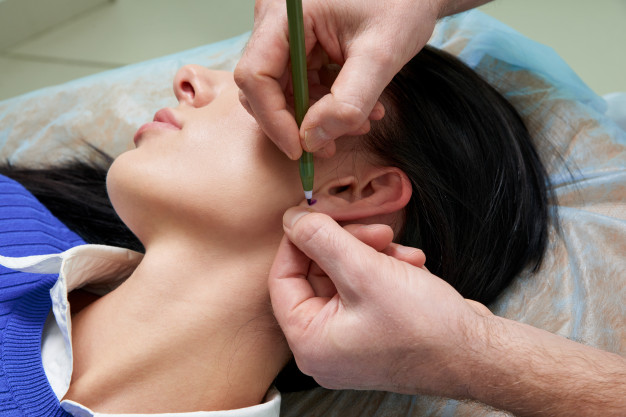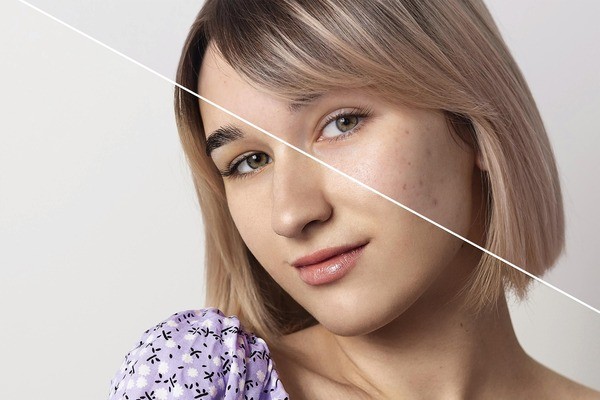
Facts about Ear Correction
The ear has three parts:- external, middle and inner ear. The external ear is composed of the auricle and external auditory meatus through which sound waves travel. It also has a tympanic membrane that moves in and out in response to a sound wave. Let us focus on the Facts about Ear Correction before going ahead with the procedure.
The middle ear is an air-filled cavity in the temporal bone that opens via the eustachian tube into the nasopharynx to the exterior. The tube is usually close but during swallowing, chewing and yawning it opens, keeping the air pressure on two sides of the eardrum equal. It also consists of three ear ossicles called:- malleus, incus and stapes. Their main function is to amplify the sound received. The footplate of the stirrup ends at the oval window which sets the fluid in the inner ear into vibration.
The inner ear consists of the bony and membranous labyrinth. The labyrinth has three components namely:- cochlea, semicircular canals and the otolith organs. The inner ear helps immensely in hearing and maintenance of the body balance.
In the following article, I will discuss the facts about ear correction. The auricle is made up of cartilage and can be damaged in road accidents. Otoplasty is a procedure which can improve the shape and look of the external ear. It is mainly performed in children to alter the deformities in the pinna of the ear so as to alleviate any sort of hearing deficits. It can also be performed in adults for cosmetic purposes. There are certain criteria that must be met before an individual is qualified for this surgery. Firstly, he/she must not have any history of untreated chronic ear infection. Secondly, there should be no life-threatening illness. Lastly, the person should not be a smoker.
Some of the facts about Ear Correction
For any age group
There is a common myth that otoplasties are performed in children of the age group between 5 to 7 when in fact it can be performed on people of any age. The reason the doctor waits for the child to turn 5 is that the cartilage has stabilized till then.
Effects on hearing
As I have already discussed previously the function of the auricle, this procedure does not affect the hearing capability of an individual. The shape of the auricle is designed in such a way so that our brain can differentiate between the sound coming from the source placed in front or behind us while we have closed our eyes. The surgeons are careful not to disturb the design so that the hearing remains normal.
Recovery
This procedure is an outpatient procedure. You don't need to remain in the hospital overnight. It requires a maximum of two hours. Local anaesthesia can be provided in case of both adults and children. It takes a maximum of two to three weeks to recover. For that duration of time, you need to wear an ace bandage around your head. The sleeping position must be altered with your head elevated. Individuals who wear glasses must defer themselves for wearing them for at least two weeks. Children can resume their daily activities after one week. In the case of pain, the doctor also prescribes pain killers. Patients are also asked to consume or apply post-operative medicines so as to reduce the risk of any infection.
Symmetry
The auricle is always slightly different from one another. Even after surgery your ears cannot be perfectly symmetrical with one another. There will always be a minor difference as surgeons are not perfect artists.
Insurance coverage
Osteoplasties does not come under cosmetic surgeries. They are considered reconstructive surgeries by the doctors. Most of the insurers cover it under their insurance. Although you would need to check with your insurer if it is covered by them.
Risk of infection
There have been several instances of infection with this surgery recorded in the medical literature. There is a possible risk of infection of the skin and inflammation of cartilage called chondritis. Bleeding and hematoma formation has also been recorded in several instances. There also could be unfavourable results which you may find displeasing. It may lead to the second surgery. There can be possible nerve damage leading to numbness of skin of ear or face. These were some important Facts about Ear Correction to enlighten you with the procedure.
Dr V.S. Rathore
Since 2003, Dr V.S. Rathore has been focused on helping and developing the well-being of his patients. He has been completely involved in carefully and precisely calculating the procedures required to achieve and meet his patient’s wants, and boost their self-confidence for more than 18 years and has performed more than 9000 successful surgeries and more than 2100 hair transplants.
Rathore was inspired to practice as a surgeon after seeing different patients suffering from various kinds of trauma, who find it very difficult to get surgery. He attended Kolkata Medical College where he pursued his Master of Surgery degree in general surgery and M.Ch. in plastic surgery. He is also a former professor of Medical College and Hospital, Kolkata







